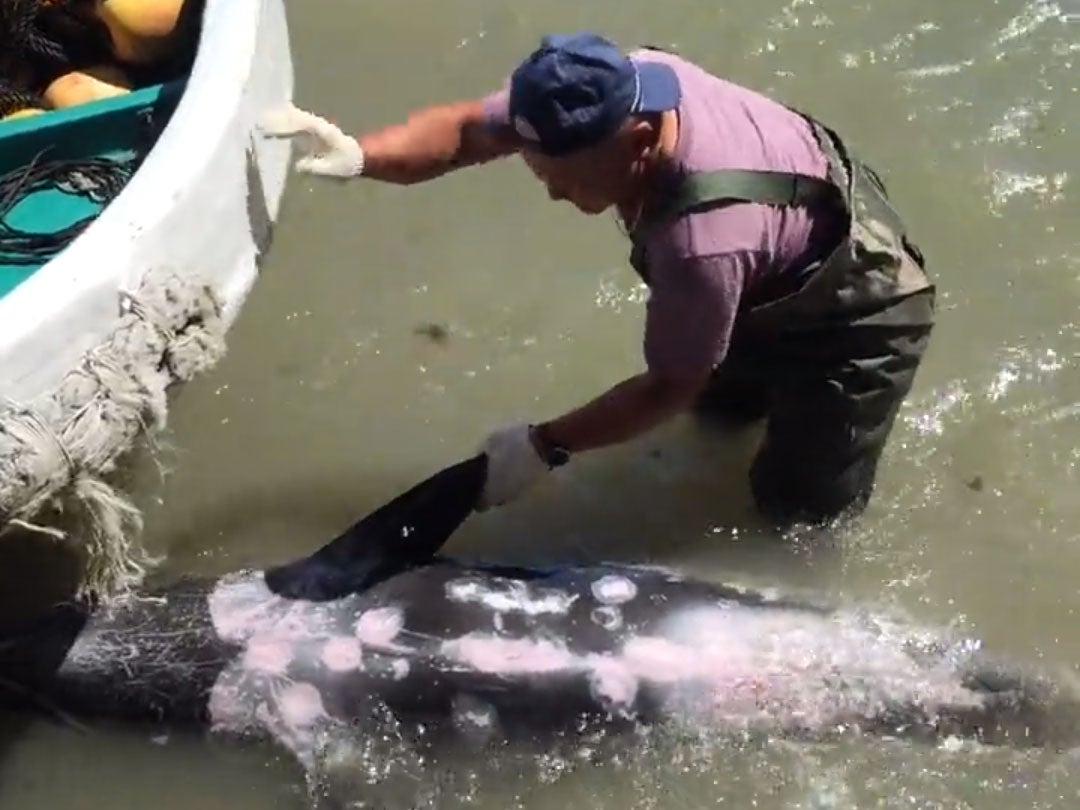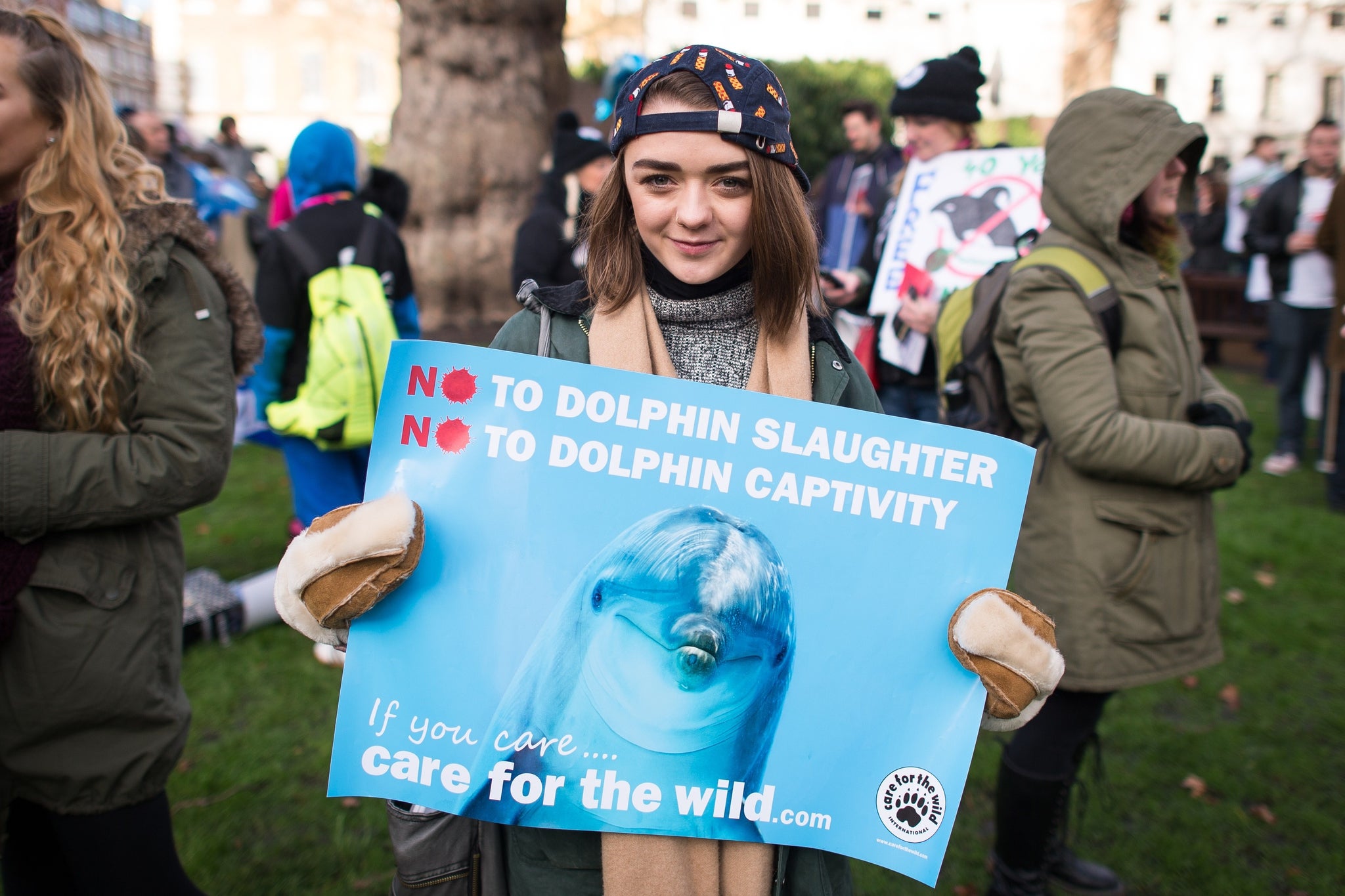Video captures dolphin trying to escape hunters during Taiji cove slaughter
Last year 751 dolphins were killed in Taiji cove

Your support helps us to tell the story
From reproductive rights to climate change to Big Tech, The Independent is on the ground when the story is developing. Whether it's investigating the financials of Elon Musk's pro-Trump PAC or producing our latest documentary, 'The A Word', which shines a light on the American women fighting for reproductive rights, we know how important it is to parse out the facts from the messaging.
At such a critical moment in US history, we need reporters on the ground. Your donation allows us to keep sending journalists to speak to both sides of the story.
The Independent is trusted by Americans across the entire political spectrum. And unlike many other quality news outlets, we choose not to lock Americans out of our reporting and analysis with paywalls. We believe quality journalism should be available to everyone, paid for by those who can afford it.
Your support makes all the difference.A video capturing the final moments of a dolphin before it dies in Taiji Cove during Japan's controversial mass slaughter of the animal has been released by conservationists.
Each year the controversial dolphin hunting season sees fishermen on boats herd dolphins into the narrow cove in Taiji where they are killed by having a metal rod driven into their necks.
The best looking dolphins are separated and sold to aquariums.
In the video, Ric O’Barry - founder of The Dolphin Project and star of the 2009 Oscar-winning documentary The Cove - shows a panicked family of Risso’s dolphins swimming around in a sea pen, having been herded into the cove from deeper waters.
Their stress is evident as some of the dolphins tangle themselves up in the netted walls. Others attempt to swim beneath the nets but end up on the side closest to the shore instead of escaping into the open ocean.
One animal beaches itself on the rocky shore at O’Barry’s feet, rolling on its back as it tries to escape.
O’Barry can do nothing to help: "I will be arrested immediately," he says. "The police are all over the place."
Activists risk lengthy prison sentences if they interfere with the hunt.
"This is anguish," O'Barry says, crouching down near the dolphin. "[He's] panic-stricken on the rocks, and I am heartbroken that I can't get in the water and help him away from ... he's tearing his skin up. This is awful."
Eventually, a boat of fishermen slowly makes its way over to the stricken animal. When they arrive, they grab the dolphin by its fin, pushing it out into the water.
“The dolphin’s not going to make it. He’s given up,” O’Barry says.
Moments later, the dolphin sinks to the bottom of the cove.

O’Barry was shaken by the incident: "It breaks my heart," he says. "This is so stressful. This is so difficult to witness. I almost got in the water. I almost got in the water and maybe I should have."
"I guess I blew it," he adds solemnly, before turning the camera off.
The annual hunt has taken place since 1969 but was thrust into the public eye after footage from O’Barry’s 2009 documentary The Cove showed the water in the bay turning red with blood as the dolphins were slaughtered.
While commercial whaling is banned, Japan claims its killing of the whales is for scientific research.
Join our commenting forum
Join thought-provoking conversations, follow other Independent readers and see their replies
Comments